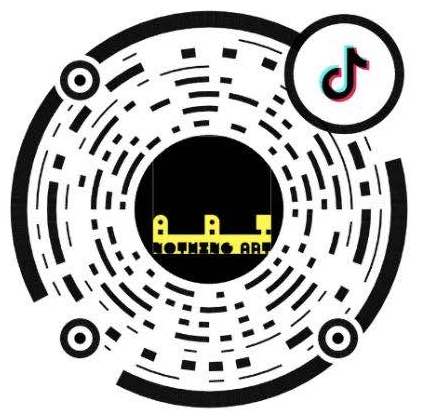After long flight to Xin Jiang, all volunteers of “Pure View @ Qi Tai Village” are well prepared for the new journey.
19:30, the sun still doesn’t leave yet. Everybody has felt the passion of Xin Jiang, just like fire.
Xin Jiang Museum is our first destination. It is the best choice to understand the history behind a place. Xinjiang is the hub of Eastern and Western cultures. Over the past few thousand years, various cultures have collided and merged here and they have created distinctive cultures and artifacts.
The museum displays the history of Xin Jiang and the folk customs of various ethnic groups, as well as domestic rare exhibitions such as corpses. The exhibits are full of Xinjiang characteristic.
The famous “Lou Lan Beauty” ancient corpse, “Five Stars Out of the East” Han Dynasty brocade and other national treasures can also be seen here. These are the treasures that should not be missed in Urumqi.
There are several permanent exhibition halls inside museum. The first floor is the Xin Jiang National Customs Exhibition and the Xinjiang Ancient Historical Relics Exhibition; the second floor is divided into left and right sides, the left side is the historical fabric exhibition hall and the exhibition “Always with the motherland”, and the right side is the ancient dry corpse exhibition and white jade exhibition hall.

Fuxi’s son-in-law embraced the upper body, sketching or painting clothes with red color, sleeves flying, Fuxi holding the hand, the son-in-law holding the rule, representing the heaven and the earth, the lower body of the snaketail intersecting, intersecting seven segments, the longest in the same kind of painting One, the tail is thick and long, the snake tail is dotted with red and black lines, and the inside is painted white. The sky and the moon are marked by ink lines above and below the frame, symbolizing that the entire celestial body is constantly running in the universe.
Fuxi, also known as Xihuang, Fuxi, is the ancestor of humanity in Chinese mythology. It is said that human beings are born by marriage with his son-in-law. In the legend, he taught the people to netize, engage in fishing and hunting of livestock, and create the theory of gossip.
In ancient China, there were legends of the “Three Emperors and Five Emperors”. Fuxi and Nuwa were one of the “Three Emperors.”
On the first floor of the Xinjiang National Customs Exhibition Hall, it introduces the folk customs of 12 major ethnic groups in Xinjiang such as Uygur, Kazakh, Mongolia, and Xibo. There are musical instruments, daily necessities and felt houses, as well as the special costumes, such as hats and scarves. The colors are mostly gorgeous, and the ethnic Xinjiang style.

Alcatel Stone Man, crafted from granite stone, it is burly, looks majestic, wide-eyed, splayed beard, neckband collar, long sleeved lapel long coat, right hand cup on the chest, left hand holding a long knife at the waist, waist Broadband, with a small knife on the left side of the waist, and ankle boots, standing in the shape of a figure eight, it vividly reflects the image of the Turkic aristocratic warrior who was active in the northern Xinjiang grassland in the 6th century.

The body is like a leopard, the first person, wearing a pocket like a warrior. The tail is slender, stretching from the underarm, and flexing through the gap between the right hind leg and the body, and then upturning backwards, like a long snake, the shape is very characteristic.

The statue of a Tang Dynasty dancer who is eager to sing a song and dances is carefully carved. The head is combed with double eyes, the amount of flowers is painted, and the eyebrows of the green eyebrows are lowered. The lips of the lips are smiling, showing a quiet and beautiful image of the “Mothering Moth”.

This group is the same as the crown, with different expressions. However, they are not required, and they are obviously deaf. These genus are “semi-body squats”, which are carved out of the head and chest respectively, while the lower part is made of wood chips, and the outer cover is yellow robes, which are formed in a black paper strip.
“The corpse can’t be missed. It is rare in the whole world. The corpse hall displays the bodies of the ancients thousands of years ago. Due to the dry climate in Xinjiang, these corpses are also preserved well from corruption. It is very precious. “The beauty of the ancient corpse” is especially famous and is one of the essences of the whole museum.
Egyptian mummies are made by hand and they are mainly preserved by spices. The wet stuff of Changsha and Jiangxi is due to the isolation of air and water to prevent oxidation. In Xinjiang, however, especially in Turpan, due to the dry air and high temperature in the desert, it has a natural sterilization and drying effect. The preserved dry skin texture and hair. The face expressions are vivid.

Scientific identification is the ancient Europa race. The dry corpse hair is well preserved and brown. Eyebrows and beards are more developed. Squatting on the limbs, hands on the chest, a long cowhide ring on the left middle finger.

According to reports, the age of the dead baby is about 8-10 months. On the left and right sides of the baby are horns and feedings made from sheep’s breasts. The body and the funerary objects are placed on a rectangular felt.

The age of death is about 4-5 years old. The body is covered with 10 to 15 cm patterns of wool, which are decorated with different lines and different colors. Only the face was exposed to the whole body and connected with 16 wooden pins.
So far, it has been unearthed in Xinjiang and has the most complete preserved body. The corpse is a female, and she was asleep when found. She is between 40 and 45 years old and is O-type blood. She is scientifically determined to be an ancient Europa species. When she went to Japan in 1992, the face was recovered. She was a beautiful woman when she was alive. Therefore, it is well-known as “Lou Lan Beauty.”
After the little volunteers saw the corpse, they were curious and scared. However, this did not prevent them from exploring the oldest “people” in Xinjiang. In the end, everyone chose their favorite image to draw out the “first painting in Xinjiang.”
The popularity of the Urumqi Museum is beyond our expectation. The little volunteers put down their paintings and picked up their favorite image to start drawing.
Although they are young, they still hold the serious attitude. They are not affected by the tourists stopping by around them at all.
After the museum, we drove to Jiangbulak without immediately. We will meet 13 local children from Xinjiang Tatar Elementary School at that beautiful place. The journey of “Pure View” has just officially started…











